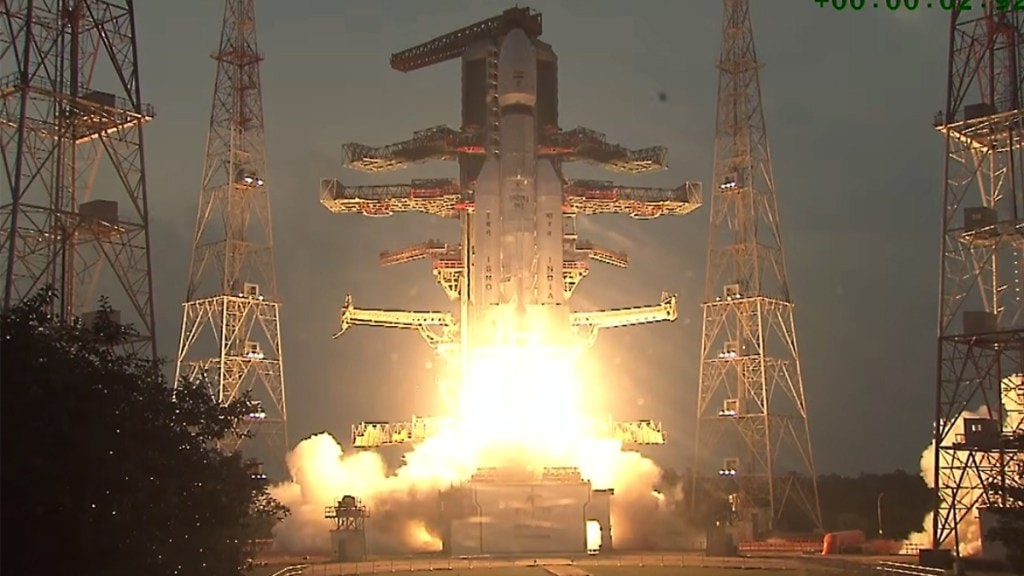The Indian Space Research Organisation (ISRO) successfully launched its heaviest communication satellite so far, CMS-03, on Sunday. This marks a major step forward in India’s space technology and maritime communication capabilities. The 4,410 kg satellite was launched from Sriharikota at 5:26 pm aboard the powerful LVM-3 rocket, popularly known as the “Bahubali” of Indian rockets. The satellite separated from the rocket about 16 minutes after liftoff, entering a geosynchronous transfer orbit.
Kudos Team #ISRO!
India’s #Bahubali scales the skies, with the successful launch of #LVM3M5 Mission!
“Bahubali” as it is being popularly referred, LVM3-M5 rocket is carrying the CMS-03 communication satellite, the heaviest ever to be launched from the Indian soil into a… pic.twitter.com/ccyIPUxpIX
— Dr Jitendra Singh (@DrJitendraSingh) November 2, 2025
CMS-03, also called GSAT-7R, has been specially designed to support the Indian Navy. It will serve as the core of the Navy’s communication network across the Indian Ocean, helping connect warships, submarines, aircraft and ground command centres.
It carries advanced multi-band payloads – including C, extended C, and Ku bands – that allow secure and high-speed transfer of voice, video and data. Compared to its older version, GSAT-7 “Rukmini,” CMS-03 offers stronger coverage, higher bandwidth, and improved real-time communication even in distant or challenging ocean areas.
Key features of CMS-03 and ‘Bahubali’ of Indian rockets
The CMS-03 communication satellite weighs 4,410 kgs, making it the heaviest satellite ever launched from Indian soil into a Geosynchronous Transfer Orbit (GTO). It is also the heaviest satellite launched by an Indian-built rocket.
The LVM3-M5 rocket, stands 43.5 metres tall. It earned its nickname “Bahubali” for being capable of lifting heavy communication satellites weighing up to 4,000 kg into GTO. Also known as the Geosynchronous Satellite Launch Vehicle (GSLV) Mk III, this was the fifth operational flight of the LVM3 rocket, ISRO said.
With improved encryption and broader frequency support, CMS-03 will greatly enhance the Navy’s ability to coordinate missions, track movements and respond to threats across the sea.
It plays an essential role in the Navy’s Maritime Domain Awareness system, which helps maintain constant surveillance and secure data exchange over vast ocean regions.
The satellite’s coverage area extends over the entire Indian subcontinent and large parts of the Indian Ocean, ensuring smooth communication where regular networks can’t reach. It will also assist civilian services like disaster management, remote sensing and telemedicine.
The solid boosters on either side provide the initial power needed for lift-off. Thanks to its powerful cryogenic stage, the ‘Bahubali’ rocket can also carry payloads weighing up to 8,000 kg into Low Earth Orbit.

